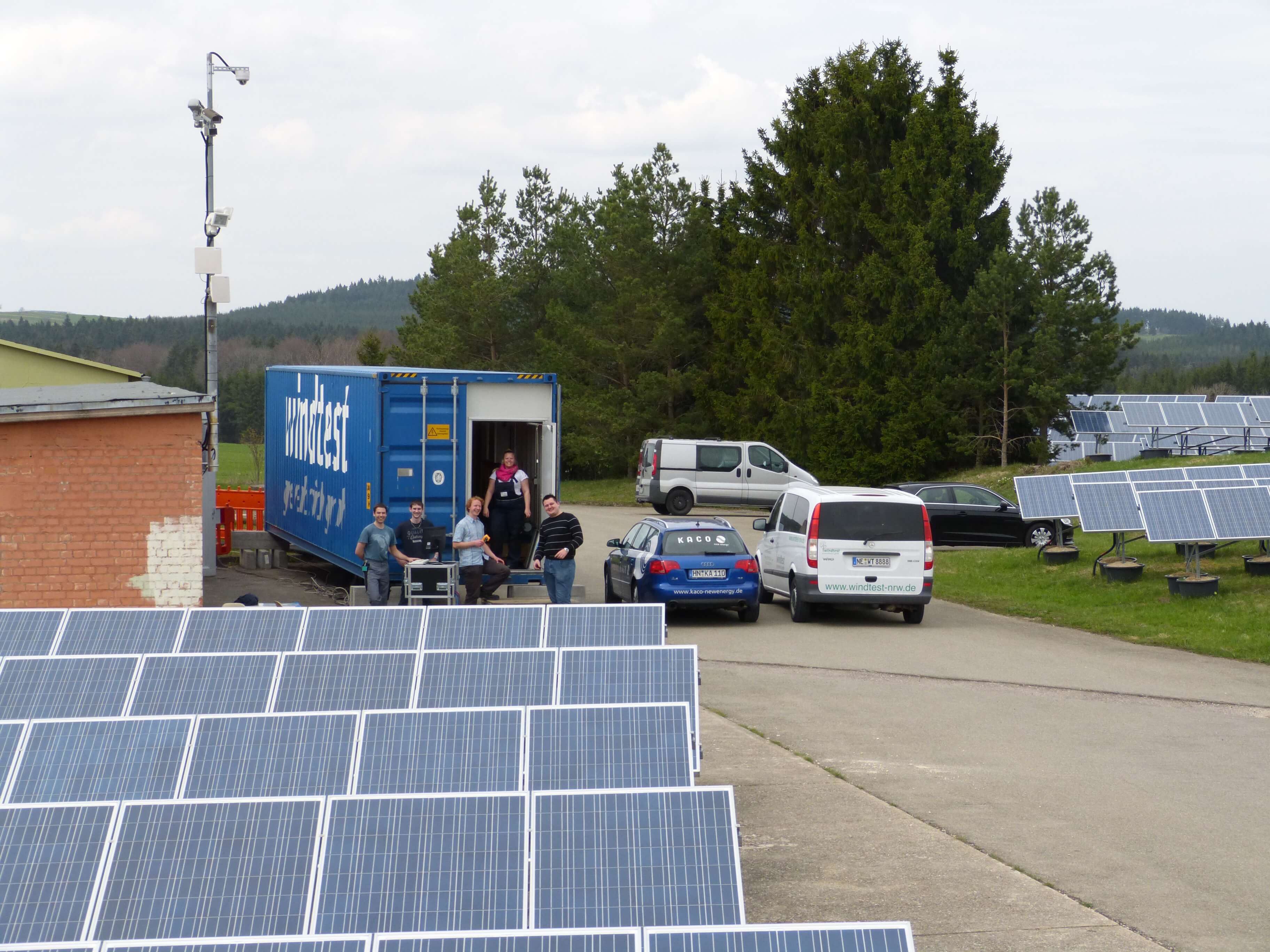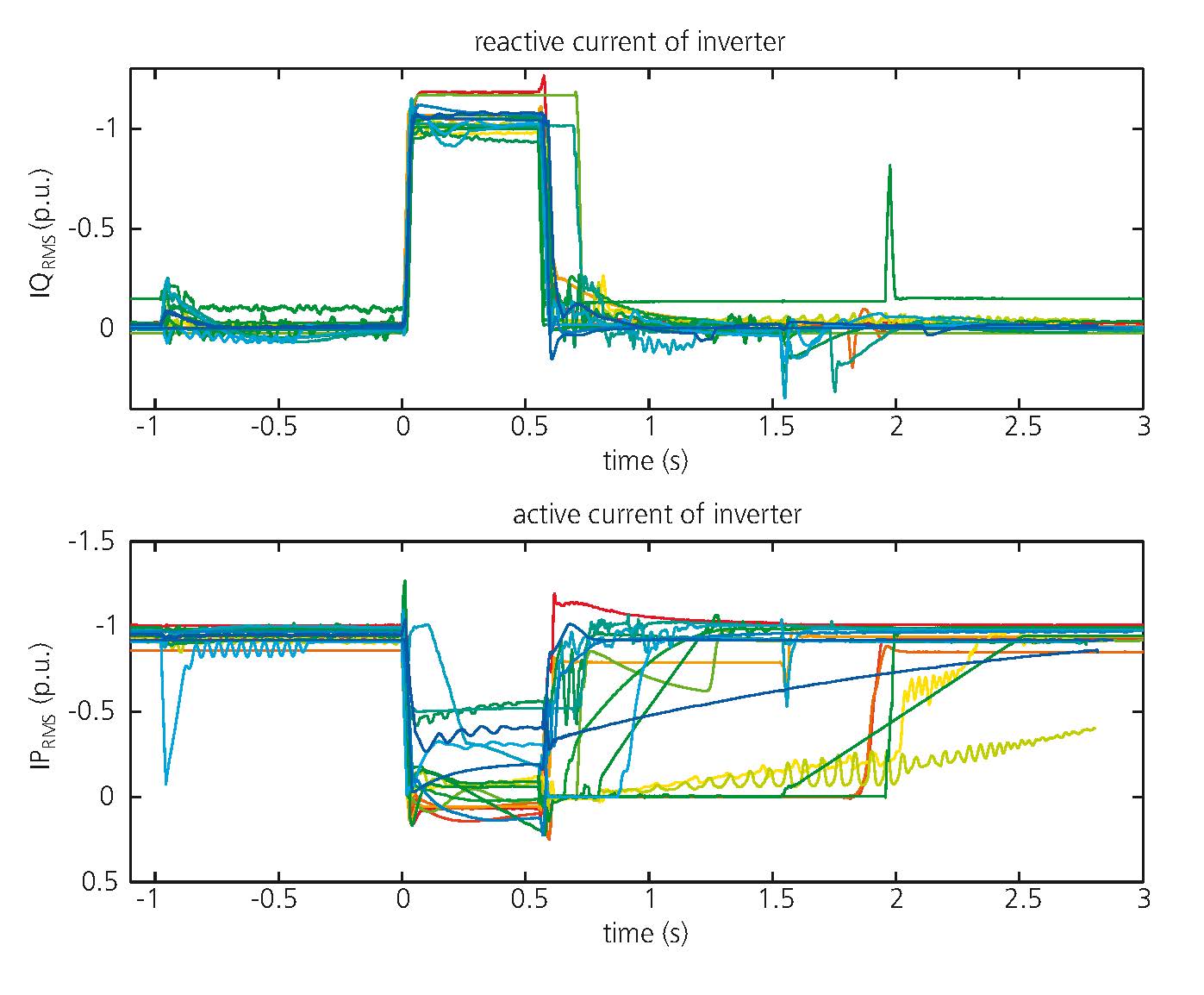| Duration: | May 2012 - December 2015 |
| Project Partners: | AEG Power Solutions GmbH, bes New Energy GmbH, Bonfiglioli Vectron GmbH, KACO new energy GmbH, Kostal Solar Electric GmbH |
Multi-PV-LVRT – How Do Inverters React to Faults in the Electricity Grid?


The behavior of inverter during short grid voltages sags can be investigated by the so called »Low Voltage Ride Through« Test (LVRT). The fast control of inverters allows dynamic grid support during faults. This is necessary because inverters will replace conventional power plants more and more. Dynamic grid support by the in-feed of reactive power prevents the system collapse in critical situations. Furthermore it helps to improve the voltage quality for consumers.
The LVRT performance of numerous inverters has been investigated in the Megawatt Laboratory of Fraunhofer ISE. Patternscan be recognised in the reaction of the test objects. Forexample, inverters from an earlier stage of development oftenuse pulse blocking to prevent overcurrents when the faultbegins. As a result, they cannot feed in current continuouslyand often inject the required reactive current more slowly.After the fault has ended, the grid voltage is strongly disturbeddue to the inrush currents from the feed-in transformer. Manytest objects thus increase their power only very slowlyafterthefault. Here and for the more frequent two-phase faults, thegrid codes do not contain the necessary measures forsupplyreliability but only minimal requirements.
To complement the laboratory tests of single inverters, the behaviour of large solar parks during grid faults is investigated in field tests. In the interactions between the inverters and the grid equipment (medium-voltage cables and transformers) and the grid connection point, unexpected resonances can occur. They can cause switch-off and place high demands on the inverter controls. Further, the field tests provide valuable indications on the behaviour of inverters in weak, generally rural grids and the superposition of harmonics. These data, which are needed for better grid integration, are recorded very accurately with a GPS-synchronised measurement system. They also serve to validate and refine the laboratory tests.